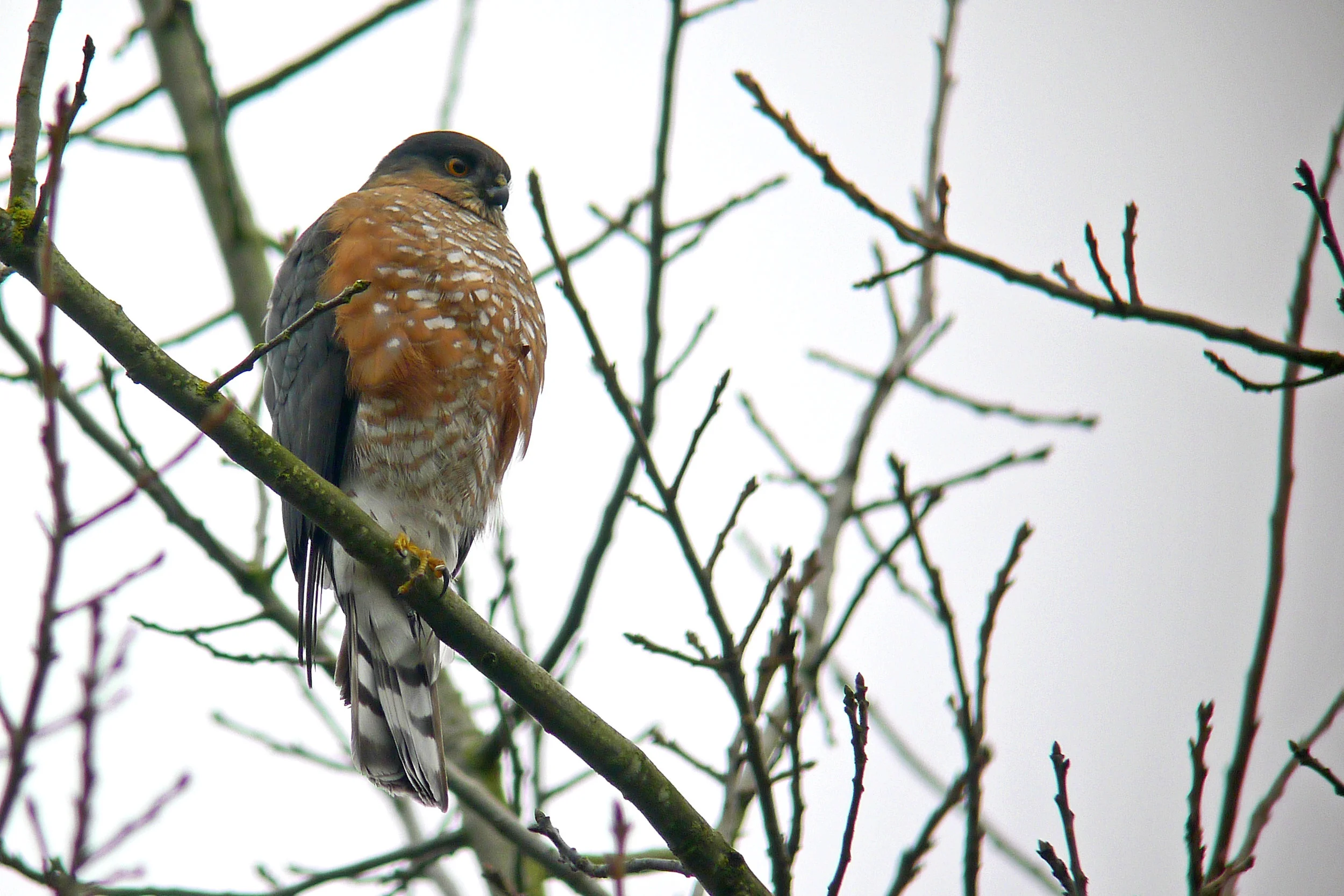Bird of the Month: Sharp-shinned Hawk
By Andy McCormick
PC: Ollie Oliver (Sharp-shinned Hawk)
Scientific Name: Accipiter striatus
Length 11 in
Wingspan 23 in
Weight 5 oz (140 g)
AOU Band code SSHA
Our smallest accipiter, the Sharp-shinned Hawk, commonly known as the “Sharpie” is a bird of the forest. It is compact, quick and agile with short wings and long tail that help it navigate in wooded areas where it hunts small birds. It breeds in the Boreal Forest and in the forests along the Cascade Range in Washington and the Rocky Mountains. In winter it can be found in urban areas and is often seen capturing small birds at backyard feeders.
This True Hawk is a Sprinter
The Sharpie shares the genus Accipiter, the Latin word for a bird of prey, with the Cooper’s Hawk and the Northern Goshawk. Its species name striatus is Latin for furrowed or striped, referencing the stripes on the hawk’s underside (Holloway). It is not clear if the reference is to the horizontal barring on the adult or the vertical streaking on the juvenile.
It attacks its prey with a quick burst from hiding. It will approach prey from a low branch or low level flight. They are also seen running under shrubbery after Dark-eyed Juncos and sparrows. They have also adapted to human-made structures and will use them to hide in wait for prey (Bildstein and Meyer). Once begun, the chase will be spirited and, if the Sharpie misses its mark, the pursuit will end quickly. There are no long chases through the bushes (Dunne, Sibley, and Sutton).
Secretive Forest Breeder
The Sharp-shinned Hawk nests in mixed or coniferous forests. The nest site is well-concealed and the Sharpie is very secretive during the breeding season. Observers note that the nest is a platform of sticks often built on top of an old nest of a squirrel or crow. Usually 4-5 bluish-white and brown-splotched eggs are deposited. Incubation lasts about a month and during this time the male brings food to the female on the nest. As the nestlings grow, the male will bring food to the nest, but the female will feed them. The young will move to nearby branches in 3-4 weeks and fly in 5-6 weeks after hatching (Kaufman).
The Sharpie makes a diet of mostly sparrow and warbler size birds, but robins make up a large portion of the diet. At times the diet varies to add bats, small rodents, snakes, and lizards. Females often take heavier prey than the males (Bildstein and Meyer). This difference in foraging provides a wider range of food available to the pair.
Migration in Numbers
Sharpies are regularly seen in fall migration usually during the first three weeks of October. Many Sharpies in the Northwest are year-round residents, but most North American Sharp-shins migrate long distances and are seen at hawk watch stations. They migrate individually or in small groups, but over the course of some days dozens may be seen mixed with Broad-winged and Red-tailed Hawks. The Sharp-shin’s migration is timed to coincide with that of passerines, which they hunt while migrating.
There has been an increase in numbers of Sharp-shins recorded during Christmas Bird Counts north of the usual monitoring stations and this may explain some reduction in the numbers of Sharpies seen at the stations. Some suggest that increased use of bird feeders as sources of prey may cause short stopping of migration (Bildstein and Meyer). More knowledge of these patterns is needed, but may be difficult to obtain as the Sharpie is one of the most difficult birds to count in a census.
A Note on Identification
“Distinguishing one accipiter from another is not easy. It is in fact, one of the most difficult identification problems facing hawk watchers. Even veteran observers do not always agree,” (Dunne, Sibley, and Dutton). The Sharp-shinned Hawk has a variety of different sizes and appearances. The males are about two-thirds the size of the females. Plumages also differ. Adults have rufous barring on the chest. Juveniles have brown streaking on the chest extending to the belly. Juveniles also have a different shape than adults have. I recommend two books that I have found helpful in learning more about identification of accipiters.
Dunne, P, Sibley, D. & Sutton, C. (1988). Hawks in flight. Boston: Houghton Mifflin.
Wheeler, B. K. & Clark, W. S. (1995). A photographic guide to North American raptors. Princeton: Princeton Univ. Press.


